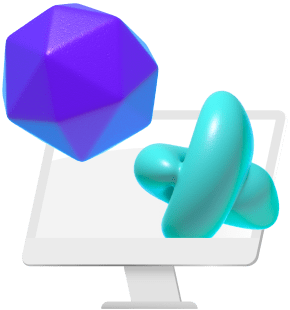Despite countless vaccines rolling out and the easing of restrictions in many countries, it is clear that the era of remote work under COVID-19 is a trend that is here to stay now, and well into the future. Even as some workplaces open up their offices, there is still often a hybrid approach applied, where some days colleagues are meeting in-person and other days the workflow is taken online.
Depending on your preferences, this remote work standard may be helping you become more productive or decreasing your productivity. If you are like me, then you are definitely feeling the latter! The transition to everything being online has been a massive challenge. As someone who thrives off of interaction with others, and enjoys the natural breaks and change of scenery an office provides, working remotely day-in and day-out with my only companion being the monstera plant next to my desk has been exhausting, and at times very unproductive.
Discussing this with colleagues and friends and doing quite a bit of research on the topic, here is a short but useful list of the best practices to keep up your remote work morale and boost productivity at all times of the day.
Establish Routines
Arguably the most important tip for boosting remote work productivity is to establish a regular routine. When working in-person, the natural rhythm of waking up, getting ready for work, and then commuting to the office helps establish a sense of grounding in your day. This feeling of predictability in routines is proven to reduce stress, benefitting both your mental and physical health.

The best way to go about setting up a routine with a remote work schedule is to take the time you would normally use to get ready and commute to work, and replace it with activities that ground you in your day. This could be for example, eating breakfast mindfully at the table while reading a good book or the news, taking a walk around the neighborhood, doing morning stretches, or sitting outside with a cup of coffee. Basically anything that starts to feel like a norm and mentally places you in your day!
Block Out Time for Specific Tasks
Blocking out time for specific activities and tasks can help structure and organize your workflow as you go through the day. Oftentimes while working we have a list of all the deliverables we need to complete and possibly a whole block of time to get them done. How do you structure when you should be working on what? The best tip is to set aside time for each task, that way whenever you are looking at your calendar, you know exactly when to work on what according to your schedule.

Photo by Nadeena Granville on Unsplash
Prioritize
To block out time for specific tasks; however, this does require a good method for prioritizing what the most immediate projects are, followed in descending order by what is less important. Clearly identifying the task you need to get done will allow you to block out the most immediate time in your schedule to complete them.
Take Breaks
According to research from Desktime, the best balance between work and break is one hour for productivity followed by a 17 minute time commitment completely removed from work. The research here found that following this process, participants in the study could spend the entire hour completely committed to their work without feeling the need to check email or their phone, and then once they built up fatigue, they could leave their work for 17 minutes and come back to another hour of work feeling completely focused and refreshed. Regardless of how long or how frequently one decides to take breaks, the important aspect is that breaks are incorporated regularly into the workflow. Consider placing these into the daily calendar schedule!

Photo by Marjan Grabowski on Unsplash
Eliminate Distractions
Probably the most obvious, but this cannot be understated. Get rid of the distractions! It seems right when the pandemic hit, TikTok, Facebook, Instagram, and Twitter found their most optimal time to steal our attention. If your phone isn’t necessary for your work, set it aside in a completely different space or room if possible. Then give yourself time to use it on the specific breaks you’ve set aside for yourself. Like the old saying, “out of sight, out of mind”, this couldn’t be more true in the case of our phones.

Photo by Ian Harber on Unsplash
Unfortunately though, when working from home our distractions don’t stop with just the removal of our phones. We also now have to balance working in the same space as our spouse, kids, and even pets, which can create conflict against the mental space needed to get work done. If possible, work in a dedicated space separate from the rest of the house. If this isn’t possible, the next best solution is to work with music or noise cancelling headphones, and try to set aside time that will be the least distracting for your workflow.
Communicate Clearly and Effectively
Without the typical in-person environment, it can be easy for communication to fall through the cracks. When working in the office, it’s easier to have quick conversations to clarify uncertain points and read body language and other physical cues present in meetings. In the virtual world, this same natural communication is missing from our everyday work environments.
To compensate for this, the best thing to do is to communicate as many relevant details as often as possible. Especially when information is being conveyed via text platforms like email, telegram, or slack, clear communication is key to ensuring that the proper information is being received, preventing any unnecessary mistakes or redos on the projects you’re working on.
Virtual Meetings
Everyone knows the typical phrase “This could’ve been an email” and honestly, most of the time it’s the truth. One really straightforward method to boost productivity is to just cut the useless meetings from the workday. Avoiding meetings should be a priority to give more time to all of the other actual activities and tasks that need attention.

On the flip side, sometimes a virtual call might be the fastest and easiest way to quickly clarify an unclear point. Rather than scheduling a specific meeting time, a quick call could be a more natural process and allow for a quick response without getting bogged down in half hour or hour long time slots.
Create solid boundaries between work and home
Setting solid boundaries between work and home is one of the most important aspects to consider in this new normal. Setting a regular time to sign off and leave your work materials behind is not only good for your mental wellbeing and work-life balance, it also boosts your productivity by setting a daily deadline to get things done.

Photo by Conscious Design on Unsplash
Without creating this set work day schedule, it’s easy to procrastinate with longer breaks and less productive time during the day with the excuse that you’ll just get it done later. In an actual office, knowing that at some point one has to leave to go home creates a pressure to get the work done in a timely manner in order to not have extra considerations when going home.
Self-Care
In some ways the term “self-care” at this point has become a bit of a cliche, but in this new era of work, it couldn’t be more important. In order to boost productivity and avoid burnout, it’s essential that time is set aside to do the things we enjoy and provide the headspace to maintain mental wellbeing. If you aren’t taking rest and time for yourself, your body and mind will do it for you. It’s better that this be your own choice!




